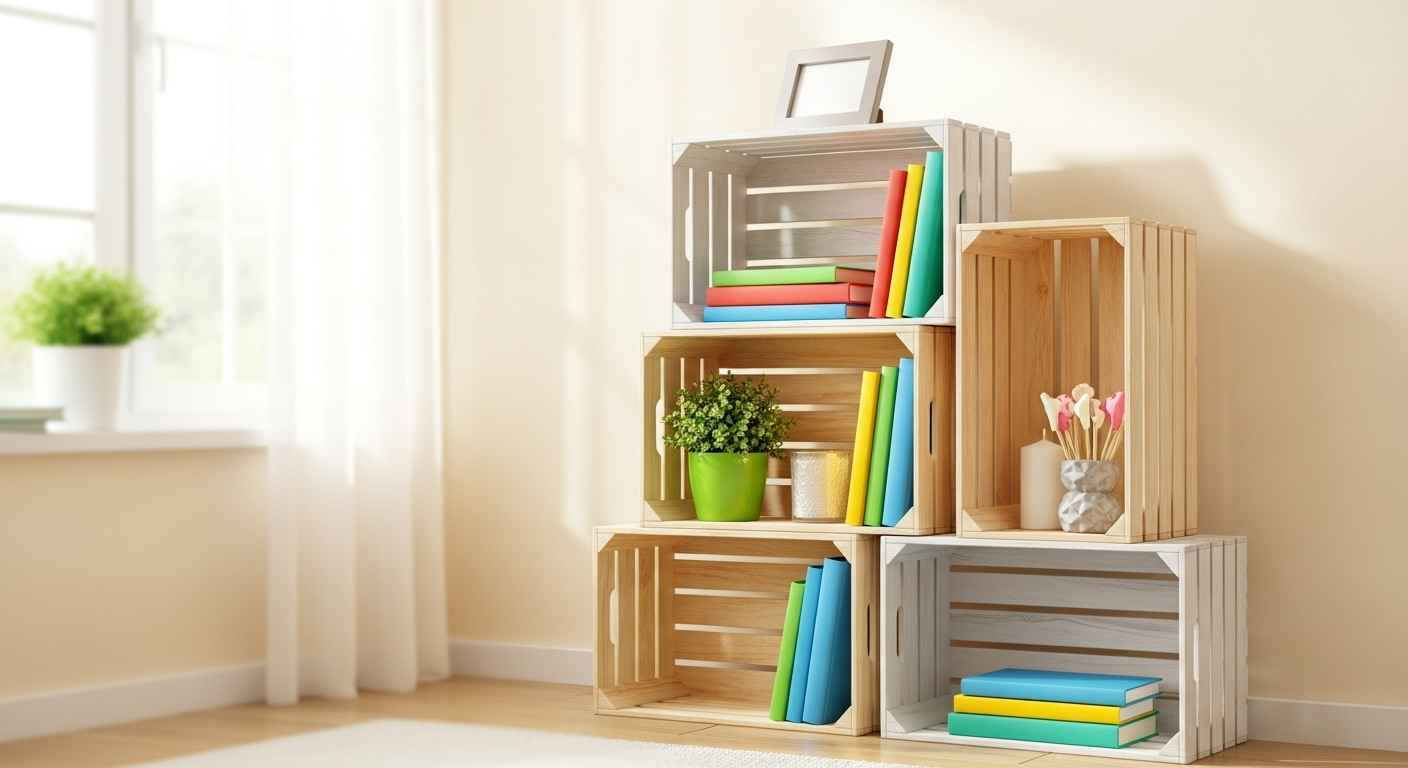Creating a bookshelf is a great way to add storage and style to your home. These DIY bookshelf projects are perfect for beginners. They require basic tools, simple materials, and clear steps. This guide covers easy projects, tips for success, and answers to common questions. Let’s get started!
Why Build Your Own Bookshelf?
Building a bookshelf yourself saves money and lets you customize the design. You can choose the size, color, and style to match your space. Plus, it’s a fun way to learn new skills. Here are some benefits:
- Affordable: Use low-cost materials like crates or reclaimed wood.
- Customizable: Fit any space or decor style.
- Beginner-Friendly: Simple designs require minimal tools.
- Satisfying: Create something functional with your hands.
Top DIY Bookshelf Projects for Beginners
These projects are designed for beginners with basic tools like a hammer, saw, screws, and a drill. Each one includes steps, materials, and tips.
1. Wooden Crate Bookshelf
Difficulty: Easy
Time: 2-3 hours
Cost: $20-$50
Wooden crates are versatile and sturdy. Stack them to create a modular bookshelf.
Materials Needed:
- 4-6 wooden crates (available at craft stores or online)
- Sandpaper (120-grit)
- Paint or wood stain
- Screws or wood glue (optional for extra stability)
- Paintbrush or cloth
Steps:
- Sand the crates to smooth rough edges.
- Paint or stain the crates in your chosen color. Let them dry completely.
- Arrange the crates in a pattern (stacked vertically, horizontally, or mixed).
- Secure the crates with screws or wood glue for stability.
- Place the bookshelf against a wall and add books or decor.
Tips:
- Use crates of the same size for a uniform look.
- Add felt pads under the crates to protect floors.
- Secure to the wall with brackets to prevent tipping.
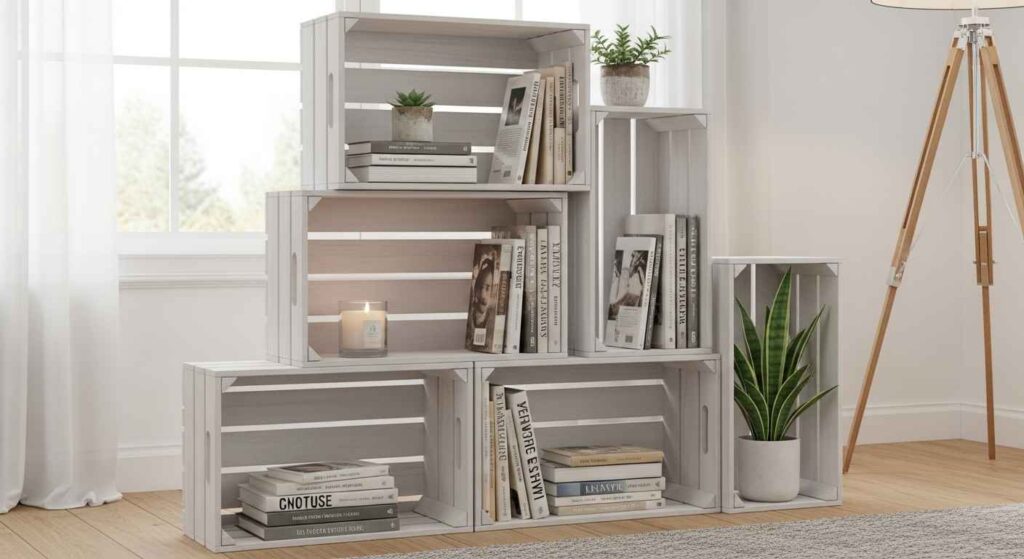
2. Ladder Bookshelf
Difficulty: Easy
Time: 3-4 hours
Cost: $30-$60
A ladder bookshelf leans against the wall and uses planks for shelves. It’s stylish and space-saving.
Materials Needed:
- 1 wooden ladder (4-5 feet tall)
- 3-4 wooden planks (1×12 inches, cut to size)
- Sandpaper (120-grit)
- Paint or stain
- Screws or brackets
- Drill
Steps:
- Sand the ladder and planks to remove splinters.
- Paint or stain the ladder and planks. Let them dry.
- Cut planks to fit the ladder rungs (measure carefully).
- Attach planks to the rungs with screws or brackets.
- Lean the bookshelf against a wall and secure the top to prevent tipping.
Tips:
- Use a sturdy ladder to support weight.
- Place heavier items on lower shelves for balance.
- Check the ladder’s weight capacity before adding shelves.
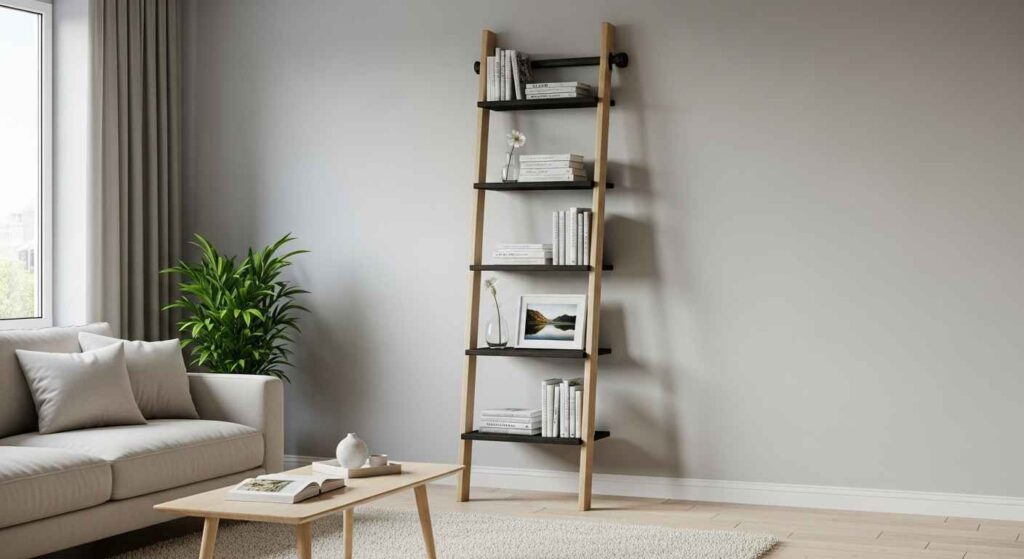
3. Pallet Bookshelf
Difficulty: Medium
Time: 4-6 hours
Cost: $10-$30
Reclaimed pallets are eco-friendly and cheap. Turn them into a rustic bookshelf with some effort.
Materials Needed:
- 1-2 wooden pallets (check for heat-treated stamps, avoid chemically treated ones)
- Saw
- Sandpaper (80-grit and 120-grit)
- Paint or stain
- Screws or nails
- Drill or hammer
Steps:
- Find a clean, heat-treated pallet.
- Sand the pallet to smooth rough surfaces.
- Cut the pallet to your desired size (optional).
- Paint or stain the pallet and let it dry.
- Attach shelves using pallet boards or additional wood planks.
- Secure the bookshelf to a wall for safety.
Tips:
- Check pallets for nails or damage before using.
- Wear gloves to avoid splinters.
- Add wheels for a mobile bookshelf.
DIY Pallet Furniture Ideas to Save Money for more pallet project inspiration.
4. Rope and Board Bookshelf
Difficulty: Easy
Time: 2-3 hours
Cost: $15-$40
This floating bookshelf uses ropes and boards for a minimalist look.
Materials Needed:
- 2-3 wooden boards (1×10 inches, cut to size)
- Strong rope (1/2-inch thick)
- Drill
- Sandpaper (120-grit)
- Wall hooks or anchors
- Paint or stain (optional)
Steps:
- Sand the boards to smooth edges.
- Paint or stain the boards if desired. Let them dry.
- Drill two holes on each end of the boards.
- Thread the rope through the holes, knotting securely under each board.
- Hang the ropes on wall hooks or anchors.
Tips:
- Use strong rope to hold weight.
- Space boards evenly for a balanced look.
- Test the weight capacity before loading heavy items.
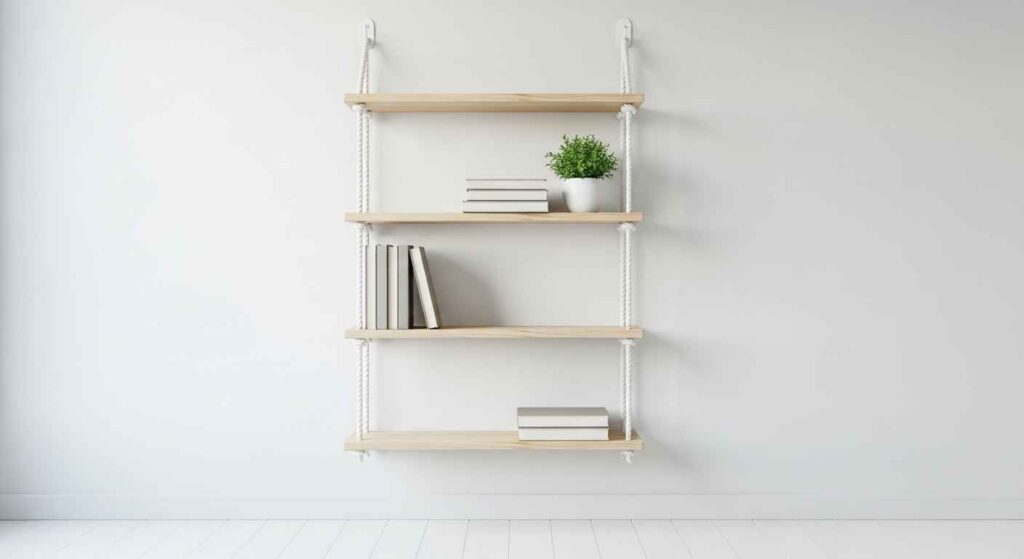
Tools You’ll Need for These Projects
Most beginner bookshelf projects require basic tools. Here’s a list to get started:
- Hammer: For nails or light tapping.
- Hand Saw or Jigsaw: For cutting wood.
- Drill: For screws and holes.
- Sandpaper: To smooth surfaces.
- Measuring Tape: For accurate cuts and placement.
- Level: To ensure shelves are straight.
- Paintbrush or Cloth: For painting or staining.
Check Must-Have Tools for New Homeowners for a complete tool guide.
Tips for a Successful DIY Bookshelf
- Plan Ahead: Measure your space and sketch your design.
- Choose Quality Materials: Avoid warped or damaged wood.
- Safety First: Wear gloves, safety glasses, and secure shelves to walls.
- Start Small: Pick a simple project to build confidence.
- Test Stability: Ensure the bookshelf can hold weight before loading.
Visit Woodworking Safety Tips from OSHA for safety guidelines.
Common Questions About DIY Bookshelves
Based on Google’s “People Also Ask” and “Related Searches,” here are answers to popular questions:
What is the easiest bookshelf to build?
The wooden crate bookshelf is the easiest. It requires minimal tools and no cutting.
How much does a DIY bookshelf cost?
Costs range from $10 to $60, depending on materials. Pallets are cheapest, while ladders cost more.
Can I build a bookshelf without power tools?
Yes, use crates or rope and board designs. A hand saw and hammer are enough.
How do I make my bookshelf look professional?
Sand surfaces smooth, use even paint or stain, and align shelves with a level.
Related Searches:
- DIY bookshelf ideas for small spaces
- How to build a bookshelf with no experience
- Cheap bookshelf projects under $50
- Creative bookshelf designs for beginners
See DIY Small Space Furniture Projects for space-saving ideas.
Design Ideas to Personalize Your Bookshelf
Make your bookshelf unique with these ideas:
- Paint or Stain: Use bold colors or natural wood tones.
- Add Decor: Mix books with plants, photos, or candles.
- Lighting: Add LED strip lights for a modern touch.
- Backboard: Attach fabric or wood for a finished look.
See Rustic Farmhouse DIY Decor Ideas Under $50 for decor inspiration.
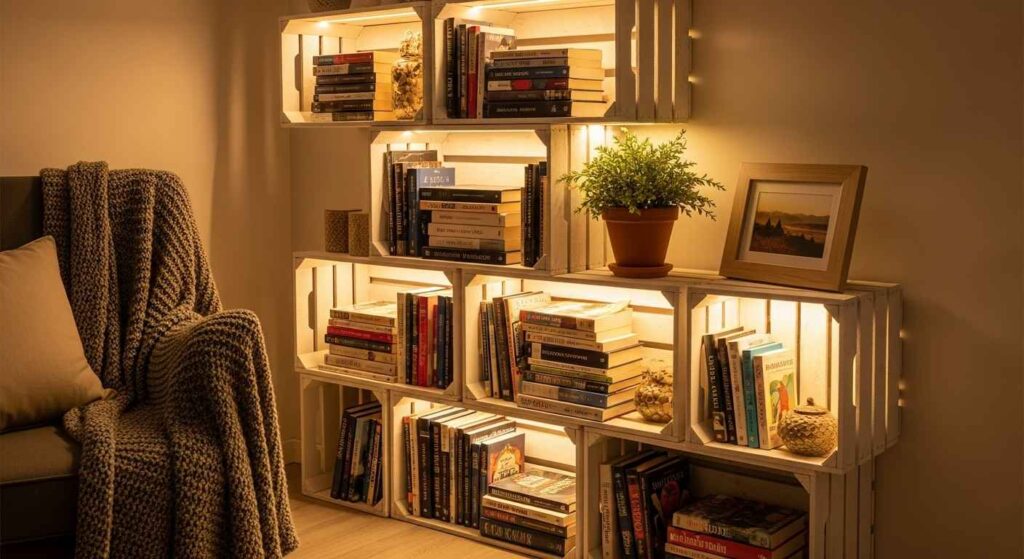
Why These Projects Work for Beginners
These bookshelf projects are simple, affordable, and forgiving. They use easy-to-find materials and don’t require advanced skills. You’ll gain confidence while creating something useful. Start with one project, and soon you’ll be ready for more complex builds.
See DIY Reclaimed Wood Table Projects Guide for another beginner-friendly woodworking project.
Final Thoughts
DIY bookshelves are a great way to start your woodworking journey. They’re practical, budget-friendly, and customizable. Whether you choose crates, a ladder, pallets, or ropes, you’ll create something to be proud of. Follow the steps, stay safe, and have fun!
Have questions or want to share your project? Leave a comment on TheHavenly.site or check out our other DIY guides for more inspiration.
